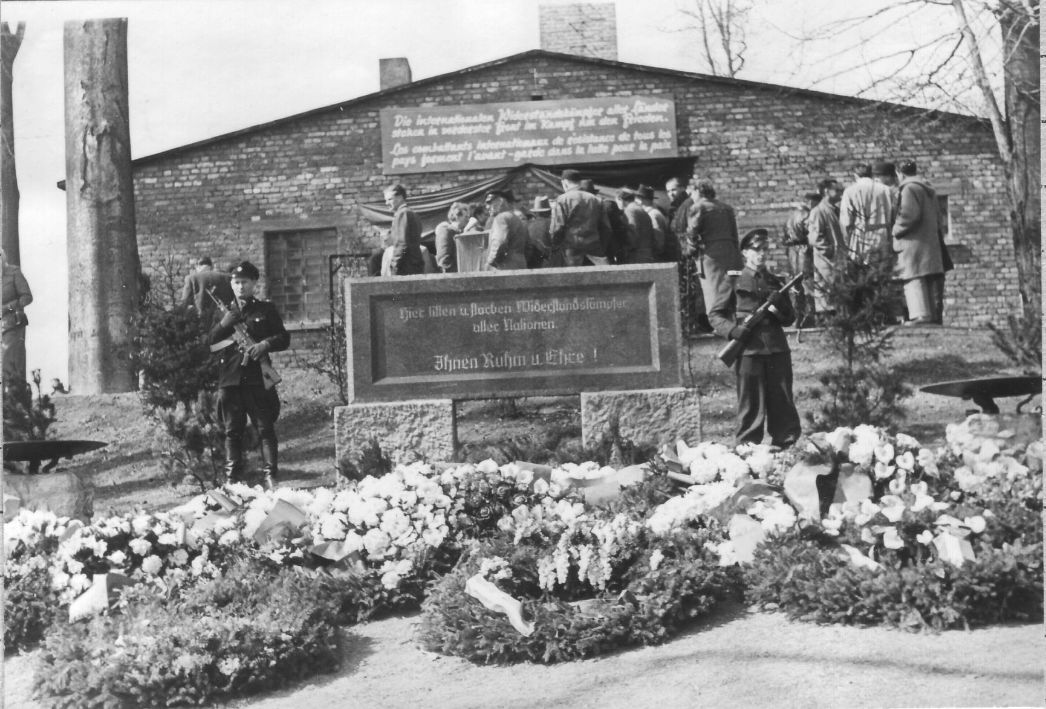
Already in the years immediately after the end of the war, survivors and victim-relatives visited the former camp grounds to express their pain and grief. The first official commemoration ceremonies on site took place in the 1950s, mostly in the context of so-called "Pèlerinages" (pilgrimages) of former French prisoners and their relatives. On their initiative and with the support of locals, including the Buchenwald survivor and later Nordhausen mayor Fritz Gießner, a first memorial site with a memorial stone was created in the
In the early 1960s the cultural fund of the GDR took over the costs for the manufacture of a sculpture by the artist Jürgen von Woyski. Initially, the work had been intended as a contribution by the GDR to the International Museum Auschwitz, but was rejected by the GDR Ministry of Culture. In retrospect, the ceremonial unveiling of the sculpture on 9 August 1964 in front of the former crematorium was regarded as the founding act of the "Mahn- und Gedenkstätte Mittelbau-Dora" (Mittelbau-Dora Memorial). Two years later a first permanent exhibition on the history of the concentration camp opened in the former crematorium.
However, most of the former camp site remained beyond public perception during the GDR era. The Mittelbau-Dora Memorial never played a key role in the commemoration policies of the SED (Socialist Unity Party). Unlike Buchenwald, Sachsenhausen and Ravensbrück, it was never granted the status of a "national memorial". Even if local efforts were made to expand the Memorial, Mittelbau-Dora remained in the shadow of Buchenwald.
In 1974 the local authorities had the completely overgrown former muster ground landscaped as a

